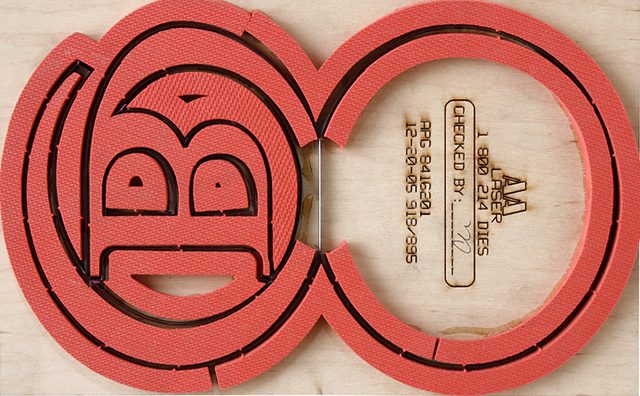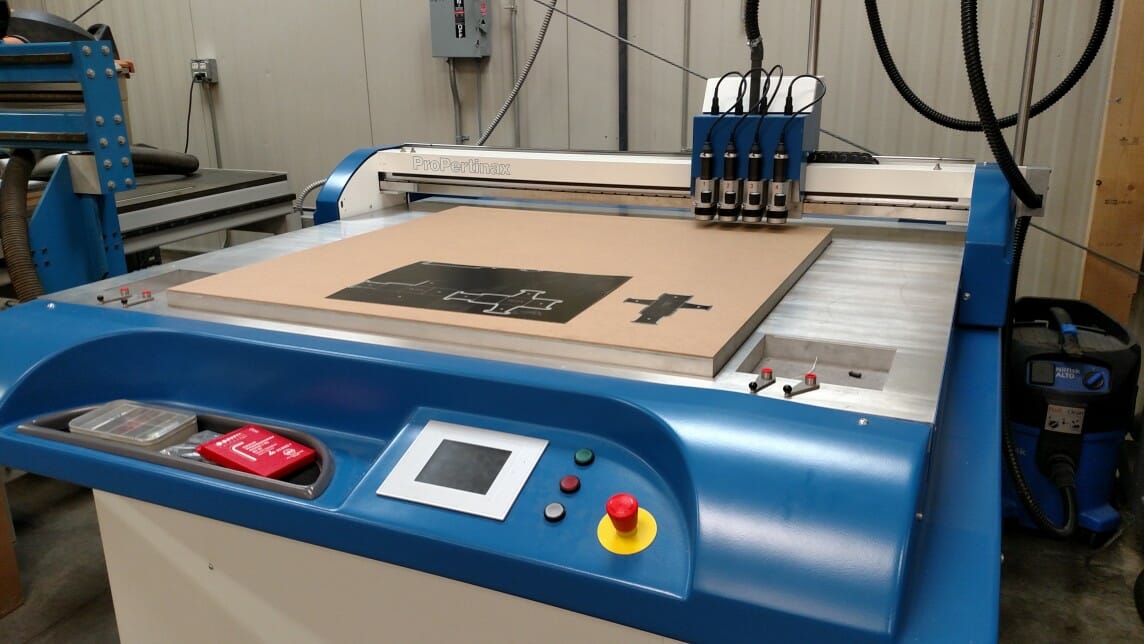Kiss cutting is very common in the printing industry especially for labels. It is achieved by reducing pressure on the press to only cut partially through the sheet. On label stock, the die would cut through the label sheet but not through the liner. A quality make-ready with a spot sheet is essential for kiss-cutting without cutting through the liner. Kiss cutting is more difficult, but not impossible on cylinder presses due to the unequal forces in the horizontal and vertical directions.
Steel rule kiss cut dies and standard cutting dies are virtually the same with only minor variations. It is very important to have high quality flat wood and that the laser is checked to burn perpendicular to the wood. Any variance in this burn angle could cause havoc in the make ready and probably cause cut through. Rule joints and mitres must be perfect and all rule must be seated flush in the die. Some customers prefer to lower their rule heights, instead of reducing the cutting pressure on the press. Although this works, this could add cost to the die. Odd rule heights are expensive and the die maker’s tooling is usually set up for .937 cut or .918 cut. More intricate and complex designs add additional make ready time and may cause cut-through. This is due to the many bends in the rule made by the die maker’s tooling. Every bend affects the angle of the rule. Excess or uneven adhesive on label stock may cause uneven cutting.
The rubber on the die plays a large role in kiss cutting. Rubber is another inconsistency added to the die. We have many customers who prefer no rubber at all. This works because the stock is not pushed pass the bevel on the knife and does not have to be ejected off the rule. We have been successful in using water jet rubber. Water jet rubber is much more consistent than blocks of rubber. We also have had great success by using lower height rubber that sits lower than standard rubber. This allows the cut to happen without having to push through the rubber.
We also manufacture thermal kiss cut dies. These dies only work on vinyl and cut with heat. They are etched magnesium plates and works a lot like foil stamp dies. The dies are very level and can achieve intricate or simple cuts with no cut through. Heat is a great tool to use. We have many customers who even heat traditional wood steel rule dies to 200 degrees to aid in cutting vinyls and other plastic materials. Make sure your die is very secure and hopefully bolted to the press if you try heat.

